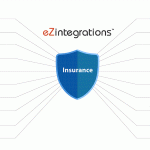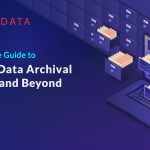With the rise of data-driven decision making, organizations are looking to data discovery tools to help them make sense of the vast amount of data they have at their disposal. But what exactly is data discovery? In this article, we’ll explore what data discovery is and how it can help organizations glean insights from their data.
What is Data Discovery?
Data discovery is the process of identifying and understanding data sets that are relevant to a particular business or research question. It involves both exploratory analysis, to understand the data, and confirmation analysis, to verify that the data is fit for purpose. Data discovery can be performed manually, through a process of trial and error, or automated, using specialized software tools.
What Are the Benefits of Data Discovery?
There are many benefits of data discovery, including the ability to find hidden patterns and relationships in data, to better understand customer behavior, and to make more informed business decisions. Additionally, data discovery can help organizations save time and money by reducing the need for manual data analysis.
Data discovery can be used in business to help find solutions to business problems. It can help identify trends, outliers, and correlations that may not be apparent from looking at the data in its raw form. Data discovery can also help create visualizations and reports that can be used to communicate the findings to decision-makers.
Data Discovery Use Cases
There are a number of business use cases for data discovery. Here are some of the most common ones:
- Identifying trends and patterns: Data discovery can be used to identify trends and patterns in data sets. This can be useful for a variety of purposes, such as identifying potential areas of business growth or opportunities for cost savings
- Detecting anomalies: Data discovery can also be used to detect anomalies in data sets. Anomalies can indicate a variety of things, such as errors in data collection or processing, or potential fraudulent activity.
- Generating hypotheses: Data discovery can be used to generate hypotheses about how different variables interact with each other. This can be useful for testing and refining business models and processes.
- Improving decision making: Data discovery can be used to improve decision making by providing insights that would not be readily apparent from traditional data analysis techniques.
- Supporting compliance: Data discovery can be used to support compliance with regulations by helping to identify potential areas of non-compliance.
- Improving business operations: Data discovery can be used to identify inefficiencies in business processes. This information can then be used to streamline operations and improve efficiency.
- Reducing costs: By understanding your data better, you can identify areas where you can cut costs without compromising quality or service levels.
What Are the Challenges of Data Discovery?
There are many challenges associated with data discovery, especially when it comes to big data. One of the biggest challenges is simply finding the data that you need, as it can be scattered across multiple sources. Once you have found the data, you then need to clean and organize it so that it can be analyzed effectively. This can be a time-consuming process, and it is often difficult to get accurate results.
Data discovery can be a challenge for many organizations. There are a number of factors that can make it difficult to find and understand data. Here are some of the challenges of data discovery:
- Data Silos: Data is often spread out across different departments and systems. This can make it difficult to get a complete picture of what data is available.
- Lack of Data Standards: Without standards for how data is collected and stored, it can be difficult to know where to look for specific information.
- Complex Data Structures: Some data sets can be very complex, making it hard to understand what the data means and how it can be used.
- Lack of Skills: Many people lack the skills needed to effectively discover and use data. This includes both technical skills (e.g., SQL) and domain-specific knowledge (e.g., understanding financial data).
- Time Constraints: Finding the right data can take time, which may not be available in situations where decisions need to be made quickly.
How can data discovery be used in business?
Data discovery can be used in business to help identify and solve business problems. By analyzing data, businesses can find trends and patterns that can help them improve their products, services, and operations. Data discovery can also help businesses make better decisions by providing insights into customer behavior, market trends, and other factors.
Using Bizdata Vault: Data Discovery Tool
No matter what tool is used, data discovery can be a valuable asset for any business. By leveraging data, businesses can gain insights that would otherwise be hidden. With the right tool, businesses can solve problems more efficiently and effectively, improving their bottom line.
For instance, Bizdata Vault a data discovery and archive platform which can discover your area of interest in data information with quick and easy drag-and-drop columns from a dataset and explore using the search engine.
Bizdata Vault can be a powerful tool for solving business problems. By analyzing data, businesses can identify trends and patterns that may be helpful in making decisions. Additionally, data discovery can help businesses improve their operations by identifying inefficiencies and areas for improvement.
Conclusion
Data discovery can be used in business to help find solutions to business problems. It can help identify trends, outliers, and correlations that may not be apparent from looking at the data in its raw form. Data discovery can also help create visualizations and reports that can be used to communicate the findings to decision-makers






